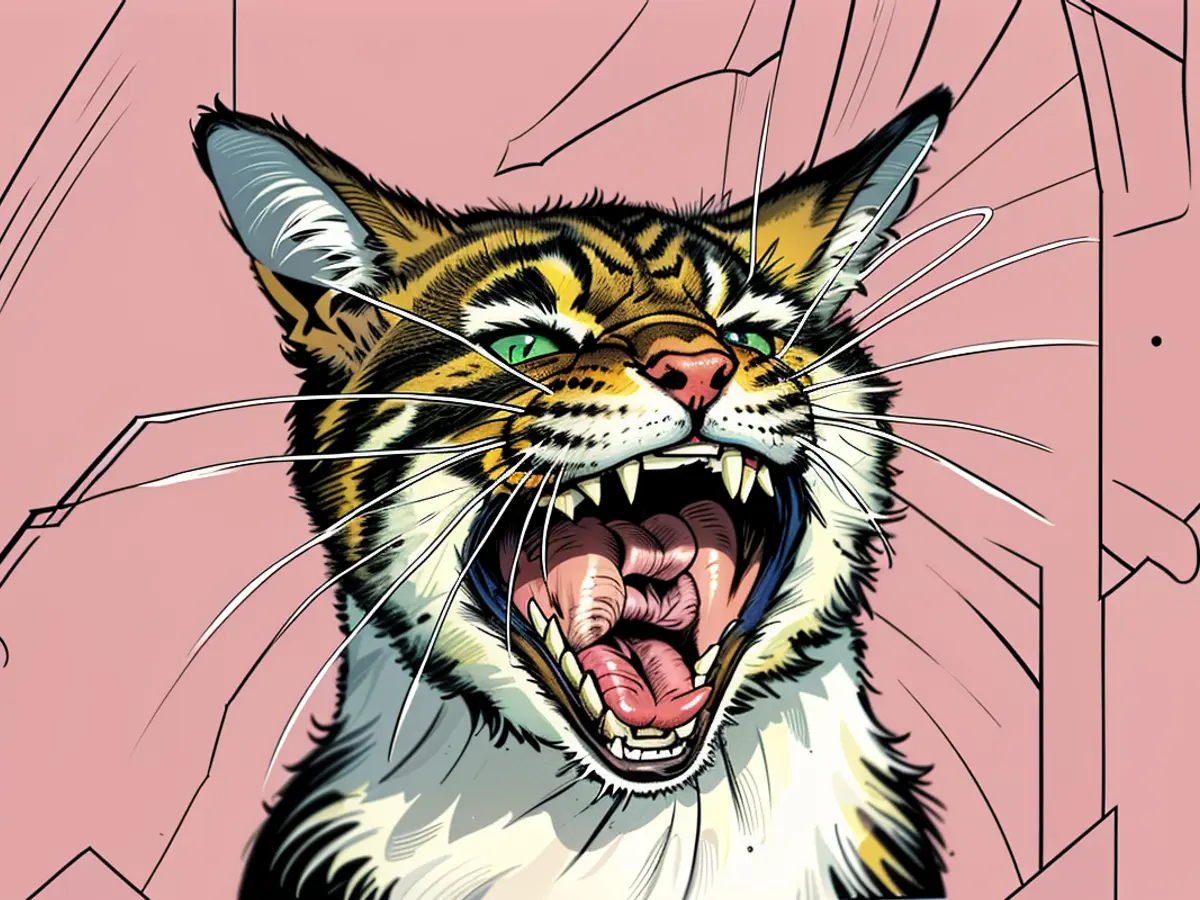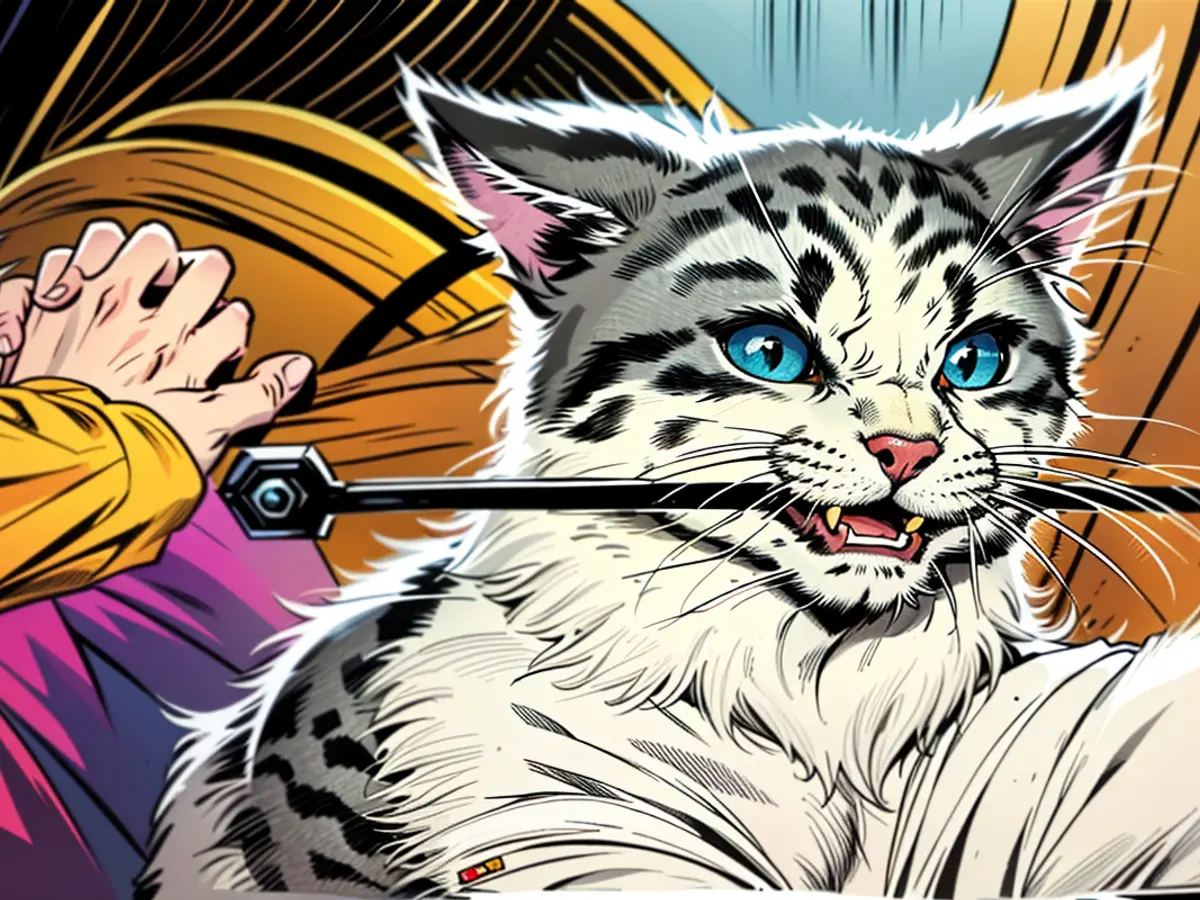- Veterinarian Explains Why Covered Cat Toilets Are a Torment for Animals
In Germany, approximately 26 percent of households own a cat. In 2021, this amounted to around 16.7 million animals. I am also part of these people. My home is shared with a one-year-old Maine Coon cat who craves entertainment and attention. To enable him to live a species-appropriate, fit, and healthy life, I contacted veterinarian Stefanie Staack. I spoke with her about the fitness of cats and proper play.
Outdoor cats are already sufficiently occupied by exploring their neighborhood. While roaming nature, they can satisfy their natural hunting and climbing instincts, often covering kilometer-long distances. Upon returning home, they first digest any prey caught outdoors and then take a nap. Therefore, an apartment where an outdoor cat lives does not necessarily need to be equipped with special cat furniture.
Indoor cats need extra attention
However, it's different for purely indoor cats: These animals have significantly fewer opportunities to move due to the limited space. "The environment should not be too boring for a cat," says Stefanie Staack, making a cat-friendly setup very important. This includes a large scratching post, many climbing opportunities, sufficient retreats, an elevated lookout point, or a cozy spot by the window to look out. Shelves can be attached to the walls or boards can be used for runways. The pet store also offers sisal sticks, suspension bridges, and other products to design the apartment appropriately for the animal.
Of course, the "litter box" is also important. Stefanie Staack points out in the conversation that it is more pleasant for the cat to have a litter box without a lid. While covered litter boxes may be more practical for owners as they prevent litter from scattering, for the animals, "it's a situation where a cat doesn't want to hide, where they would actually like to have a 360-degree view to see if the enemy is coming." Additionally, the cat does not want its food bowl next to the litter box and its water bowl next to the food bowl.
Why is regular play so important?
However, furniture alone is not enough – cat owners also need to actively entertain their furry friends. This means: Play! "For physical fitness, movement is generally important, and an indoor cat always has too little movement. Therefore, playing is important, but so is proper nutrition," says veterinarian Stefanie Staack.
During play, the cat must observe, estimate distances, time its jumps, balance, and sometimes dart around or climb up the scratching post. To coordinate all this properly, the animal must exert both body and mind and learn new things. Additionally, regular exercise can have a positive effect on the cat's body weight, similar to humans.
This is especially important if a cat is kept as a single pet and cannot interact with another of its kind. However, if the space and opportunity allow, it is best to consider having a companion for purely indoor cats.
Even when two cats are kept together and get along well, regular interaction with humans is important. "It provides exercise for the animal and mental stimulation," says Staack. It also strengthens the bond between human and animal - after all, one keeps a cat because one likes it and wants to interact with it.
When there's not enough engagement, the animals suffer
"Cats can suffer from loneliness and neglect, and some animals may exhibit behavioral problems as a result: litter box issues, aggression, recurring bladder infections, for example," Staack explains. She also notes that it's a misconception that cats are generally solitary creatures that can be left alone all day. Especially indoor cats are demanding: "They need people and they need to be spoken to."
"A cat isn't just a decorative item on the couch. The cat wants to spend time with you, and if it's older, it's likely to be time for cuddling and petting, talking to it, or watching TV together. A younger cat wants to play and have fun, and in any case, one should talk to it. The cat may not understand what you're saying, but it notices that you're addressing it. It picks up on that - and also the tone of voice quite precisely."
Cats are creatures of habit
"Cats appreciate a certain predictability. They know when their humans are around and when they're fed," says Staack. This also applies to playtime. Cats love routines, so ideally, humans should establish fixed feeding times and playtimes. Anything from 10 minutes upwards is a good duration. "If you have an older cat that doesn't really feel like playing anymore, it might do three minutes and that's enough. With a younger cat, you can spend half an hour."
Which toys are preferred varies from cat to cat, so it's best to experiment. Ideally, toys should be the size of a mouse, but they shouldn't be waved directly in front of the cat's nose. No bird flies directly in front of a predator, after all. Too easy prey is boring prey.
Suitable toys
For example, toy mice and cat wands are suitable. Many toys can also be made from everyday items. As is well known, many cats love cardboard boxes, simple strings, or even an acorn brought back from a walk.
"There are also cat puzzle boards that you can buy ready-made or make yourself. The cat has to use skill and a bit of effort with its paws to fish out treats from somewhere. Whether it's from tubes or between rubber nubs. If you want to make such a board yourself, you can use an egg carton, a Toffifee packaging, toilet paper rolls, or household paper," Staack recommends.
It's important to figure out your cat's preferences, try out new toys, and offer variety. To keep a toy from becoming boring, it should be put away in a drawer for a longer period. Then, it's exciting again after a few weeks.
Unsuitable toys
"Important with all toys: There must be nothing on them that can be swallowed," the vet warns. This includes small beads, feathers, or pom-pom parts that can break off. "They usually pass through the body, but one should be a bit careful in general."
Not all products available for purchase at pet stores are suitable: "However, many specialty stores do have staff capable of providing appropriate advice." Some products she receives from companies at her veterinary practice aren't well-thought-out. "Sometimes I think, if a little girl comes in, I'd give her this wand with silver stars, beads, and glitter as a magic wand."
Important is that toys are sturdy and don't smell of chemicals. They shouldn't be too sharp to avoid injuring the cat. Plastic products that can splinter or break are unsuitable. If a cat swallows a small or sharp part, it can be life-threatening. Also, avoid items that could wrap around the neck or paws, explains the veterinarian. Especially when the animals are alone, toys should not be left lying around.
Playing with a laser pointer is also not a good idea, as cats have very light-sensitive eyes. A strong, concentrated beam of light can cause injuries. Since the point the cat wants to catch keeps disappearing, it can also be very frustrating for the animal.
The End of Playtime
Stefanie Staack also has a tip for ending playtime: "In fact, it's best to let the game run out slowly rather than ending it abruptly. This can lead to frustration in cats." When playing with a cat, it can sometimes get quite wild. At some point, you might simply move the fishing rod less. During the "cool down" phase, you can fill a snack roll or a puzzle feeder with treats. This allows the cat to entertain and reward itself for a while longer.
Indoor German cats, like mine, often require more attention due to their limited space. To create a stimulating environment, Stefanie Staack suggests incorporating a large scratching post, numerous climbing opportunities, sufficient hiding spots, an elevated viewpoint, and a cozy window nook.
Regular play is crucial for indoor cats' physical fitness and mental stimulation, as stated by veterinarian Stefanie Staack. This includes toys suitable for cats, such as mouse-sized toys, toy mice, or DIY toys like cardboard boxes and simple strings.








